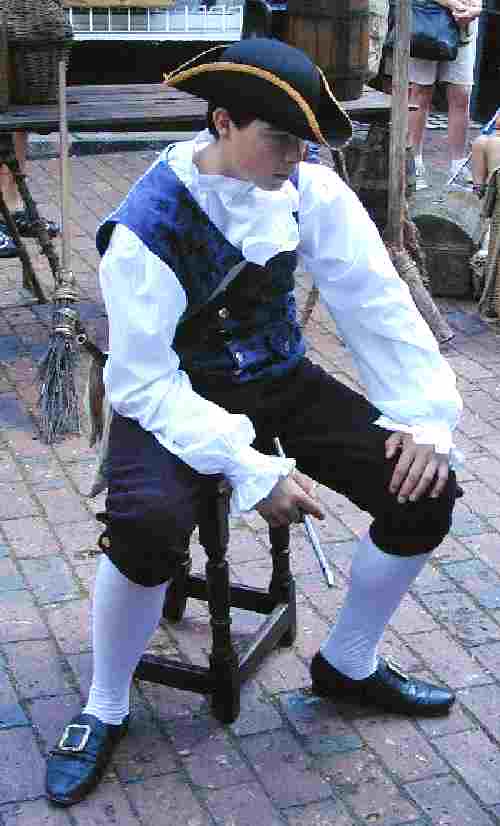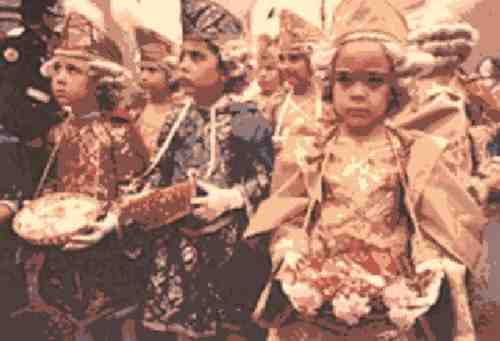
Figure 1.--The boy participates in a historial reenaction festival heald annually at the historic spa town of Royal Tunbridge Wells, Kent in England.


Figure 1.--The boy participates in a historial reenaction festival heald annually at the historic spa town of Royal Tunbridge Wells, Kent in England. |
Historical reinaction is popular in Europe. Many cities have parades and processions dating back centuries. Many of these events are elaborately costumed. They do not seem as popular as 18th century events, but there are events of varying popularity and sophisticvation in may countries. While it is the 19th century Civil War events that are most popular in America, Europe with its longer history has a much wider range of such events. The 17th and 18th century was an era in which wigs were enormouslu popular. The cost of wigs, however, means that they are not always used in costuming.
The historic spa town of Royal Tunbridge Wells in Kent promotes an annual historical festival. For a few days each summer costumed characters wander through the picturesque street called "The Pantiles", recreating the town's Georgian heyday. The period of the costume shown here is the 1790s (figure 1). Note that that the lad is holding a penny whistle, with which he entertained passers-by. The late 17th century was the point as which specialized children's clothing were fors worn by boys after breeching. (There were not as yet any specilaized girls clothing.) The outfit this boy has on was an adult style, but many boys still wore uit rather than the nre specilaized styles like sailor suits. Vests were very fashionable in the late 18th century. I'm not sure how common it was to wear them without a jacket. Note the double breasted style. This identifies it as a late 18th century outfit. He wears the knee breeches that were the style of the day. Some younger boys at this time had begun wearing skeleton suits with long pants by the 1790s. By the 1800s, long pants had generally replaced knee breeches for boys wear. Note the white stockings that the boy is wearing and the button closing breeches. This boy appears to have only one button to close his breeches at the knee. Wigs were still common in England in the early 1790s, but quickly declined by the turn of the 19th century. This boy wears a still popular tro-cornerned hat. Also notice the wrist ruffles on his shirt.
Corpus Cristi in Spain is a time for dressing in elabrate costumes, many are based on historical clothing of various periods. Corpus Cristi appears tonbe one of many such events (figure 2). HBC knows very little about such Spanish historical re-enactments, but they appear to be primarily religious events while re-enactments in America and Britain are more secular events.

Figure 2.--Young boys in Toledo Spain dressed in l8th century costumes celebrating Corpus Christi. Note the elaborate wigs. |
Navigate the Boys' Historical Clothing Web Site:
[Return to the Main reinaction page]
[Introduction]
[Activities]
[Bibliographies]
[Biographies]
[Chronology]
[Clothing styles]
[Countries]
[Essays]
[Boys' Clothing Home]
